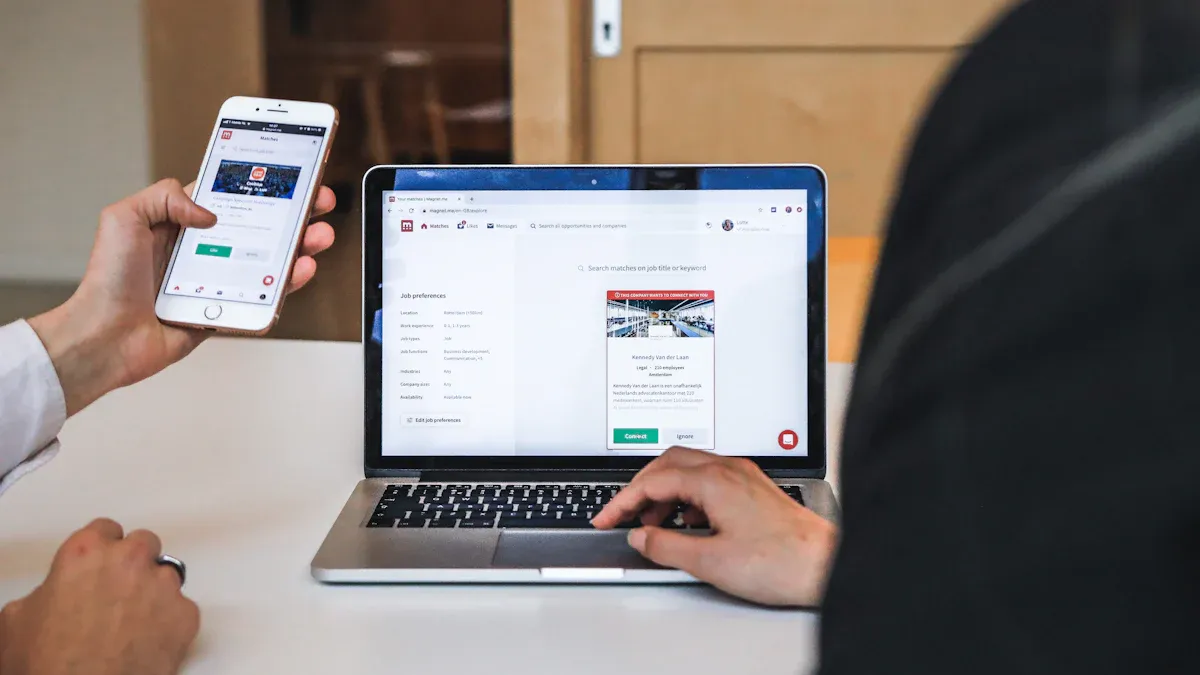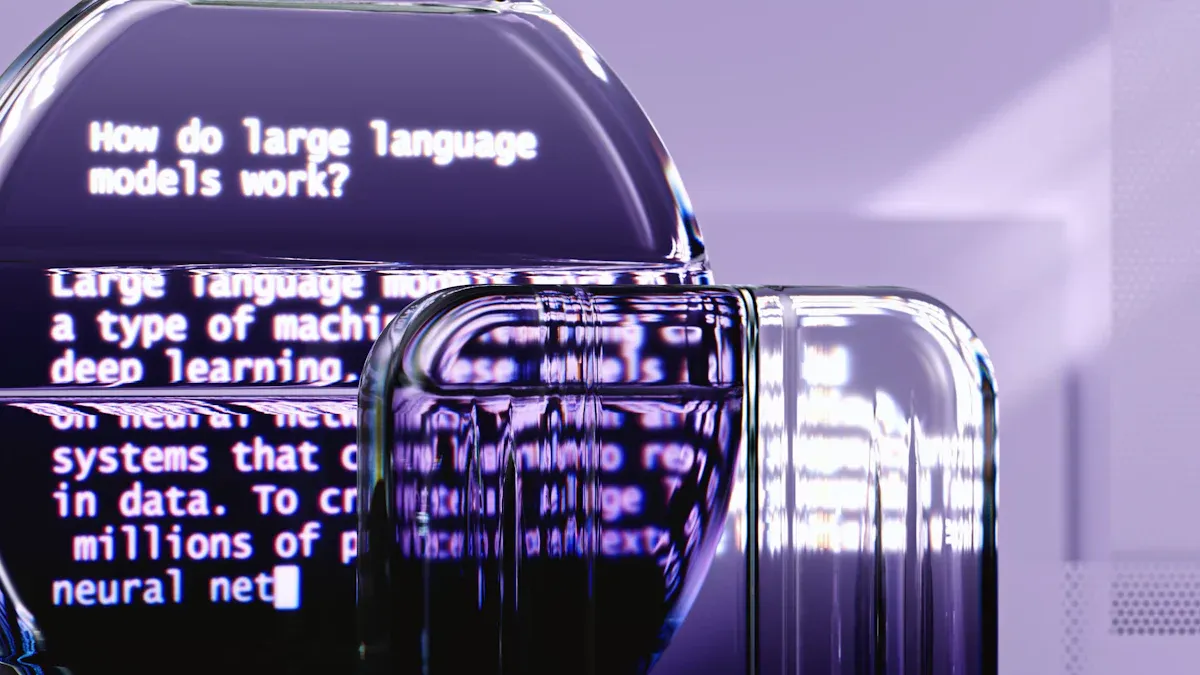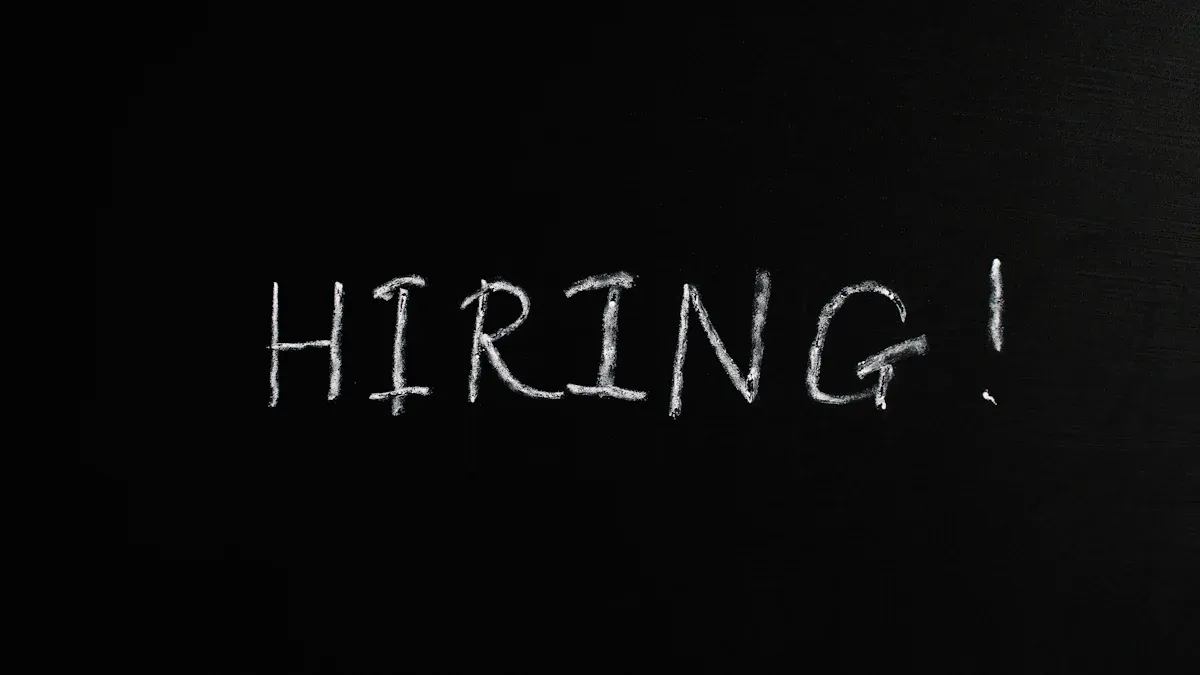The Benefits and Drawbacks of AI-Generated Job Descriptions

Imagine you’re a recruiter juggling multiple tasks—screening resumes, scheduling interviews, and crafting job descriptions. Wouldn’t it be great if technology could take some of that load off your plate? That’s where AI-generated job descriptions step in. These tools use artificial intelligence to create job postings quickly and efficiently, saving you time and effort.
Why does this matter? Studies show that AI job matching achieves an accuracy rate of 85%, compared to just 60% with traditional methods. Plus, AI can shortlist candidates in about 10 minutes, while manual processes might take an hour. This speed and precision make AI-generated job descriptions a game-changer in modern recruitment. But here’s the big question: AI-Generated Job Descriptions: Are They More Effective? Let’s dive in and find out.
Advantages of AI-Generated Job Descriptions

Time Efficiency
Faster creation of job descriptions compared to manual efforts.
Let’s face it—writing job descriptions can be time-consuming. With AI, you can create detailed and professional job postings in minutes. Instead of spending hours crafting the perfect description, you can let AI handle the heavy lifting. This means you’ll have more time to focus on other important tasks, like interviewing candidates or strategizing your hiring process.
Streamlines the hiring process, allowing recruiters to focus on other tasks.
AI-generated job descriptions don’t just save time; they also make your hiring process smoother. By automating repetitive tasks, AI frees you up to concentrate on building relationships with potential hires. Imagine how much more productive you could be when you’re not bogged down by administrative work.
Consistency and Standardization
Ensures uniformity in tone, structure, and formatting across job postings.
Ever noticed how some job descriptions feel inconsistent? One might be overly formal, while another sounds too casual. AI fixes this by maintaining a consistent tone and structure across all your postings. This uniformity not only looks professional but also helps candidates better understand your company’s expectations.
Reduces errors and inconsistencies in job descriptions.
Typos and formatting errors can make your job postings look unprofessional. AI tools minimize these mistakes, ensuring your descriptions are polished and error-free. This attention to detail can leave a positive impression on potential candidates.
Keyword Optimization
Incorporates relevant keywords to improve search engine visibility.
AI tools are great at identifying the right keywords to include in your job descriptions. These keywords make your postings more visible on search engines, helping you reach a larger pool of candidates. If you’ve ever wondered, "AI-Generated Job Descriptions: Are They More Effective?"—this is one reason why they are.
Enhances the likelihood of attracting qualified candidates.
When your job descriptions are optimized with the right keywords, they’re more likely to attract the right talent. AI ensures your postings are tailored to what candidates are searching for, increasing your chances of finding the perfect fit for your team.
Did you know? AI-generated job descriptions can also improve diversity and inclusion by focusing on objective criteria. This creates a more welcoming environment for candidates from all backgrounds.
Here’s a quick look at some of the benefits AI brings to recruitment:
Benefit | Description |
|---|---|
AI automates tasks like resume screening and interview scheduling, allowing for quicker hiring. | |
Improved diversity and inclusion | AI reduces unconscious bias by focusing on objective criteria, promoting a diverse workforce. |
Enhanced candidate experience | AI personalizes the candidate journey and speeds up the recruitment process, improving overall experience. |
With these advantages, it’s clear that AI-generated job descriptions can transform your hiring process. But are they the ultimate solution? Keep reading to explore their drawbacks and how to strike the right balance.
Scalability
Efficiently produces numerous job descriptions in a short amount of time.
When your company is growing fast, hiring can feel like a never-ending task. Writing job descriptions for multiple roles takes time, especially when you’re juggling other responsibilities. That’s where AI steps in to save the day. These tools can generate dozens of job descriptions in just minutes. You don’t have to worry about starting from scratch every time. Instead, you can focus on reviewing and refining the drafts to match your needs.
AI also speeds up the screening process. Tools like the Resume-Job Description Compatibility Analyzer can evaluate resumes in bulk against standardized job descriptions. This means you can identify top candidates in seconds instead of spending hours sifting through applications. It’s like having an extra pair of hands that never gets tired.
Tip: Use AI to handle repetitive tasks like drafting and screening. This frees up your time for more strategic work, like interviewing and onboarding.
Supports high-volume hiring needs for growing businesses.
If your business is scaling up, you’ll likely need to fill multiple positions quickly. AI-generated job descriptions make this possible. They ensure consistency across all postings, which is crucial when you’re hiring at scale. Plus, AI tools use a standardized 1-10 rating system to evaluate applications. This ensures every candidate gets a fair and objective assessment.
High-volume hiring doesn’t have to be overwhelming. With AI, you can manage the workload efficiently while maintaining quality. Whether you’re hiring for five roles or fifty, AI helps you keep up without breaking a sweat.
Did you know? AI can process hundreds of applications in the time it takes a human recruiter to review just a handful. That’s the power of scalability!
Balancing AI and Human Input for Optimal Results

Review and Edit AI-Generated Content
Ensure human oversight to refine and personalize job descriptions.
AI can create a solid foundation for your job descriptions, but it’s up to you to add the finishing touches. Think of it as a first draft that needs your expertise to make it shine. By reviewing and editing the content, you can ensure it reflects your company’s unique voice and values. This step helps you connect with candidates on a deeper level, showing them what makes your workplace special.
Address any biases or inaccuracies in the AI-generated text.
AI isn’t perfect. Sometimes, it might include outdated language or unintentionally biased phrasing. That’s why your role as a reviewer is so important. By carefully checking the text, you can catch these issues and make adjustments. This ensures your job descriptions are inclusive and free from errors that could turn candidates away.
Use AI as a Supportive Tool
Leverage AI for initial drafts or repetitive tasks.
AI works best when you use it to handle the heavy lifting. Let it generate the first draft or tackle repetitive tasks like formatting. This saves you time and energy, so you can focus on the creative aspects of recruitment. For example, Priya Singh used AI tools to refine her technical responses, which helped her land multiple job offers.
Combine AI efficiency with human creativity and judgment.
AI is fast, but it lacks the creativity and intuition you bring to the table. By combining its efficiency with your expertise, you can create job descriptions that are both polished and engaging. Daniel Rizea, an AI expert, warns about the risks of AI hallucination, emphasizing the importance of human oversight. Together, you and AI can make a powerful team.
Evidence Type | Description |
|---|---|
Testing and iterating ensures job descriptions are optimized based on real-world data. | |
Adaptability | The iterative process allows adaptation to job market changes and AI advancements. |
Continuous Improvement | Regular refinement of job descriptions leads to better hires and a stronger employer brand. |
Train AI Tools with Diverse Data
Use inclusive and representative datasets to minimize bias.
AI learns from the data you feed it. If that data isn’t diverse, the results won’t be either. To avoid this, train your AI tools with datasets that represent a wide range of perspectives. This helps create job descriptions that appeal to candidates from all backgrounds.
Regularly update AI tools to align with evolving industry standards.
The job market changes constantly, and your AI tools need to keep up. Regular updates ensure they stay relevant and effective. By aligning your tools with the latest trends, you can maintain a competitive edge and attract top talent.
Tip: Treat AI as a partner, not a replacement. Together, you can create job descriptions that are accurate, inclusive, and engaging.
AI-generated job descriptions bring a mix of advantages and challenges to the table. On one hand, they boost efficiency, promote diversity, and enhance the candidate experience. On the other, they can feel impersonal, carry biases, and raise data privacy concerns.
Benefits | Drawbacks |
|---|---|
Enhances efficiency in recruitment processes | Potential for bias due to human-designed systems |
Promotes diversity by reducing unconscious bias | Risk of impersonality in candidate interactions |
Improves candidate experience through personalization | Data privacy concerns and compliance issues |
To get the best results, you should treat AI as a helpful assistant rather than a complete replacement. Use it to handle repetitive tasks while adding your personal touch to reflect your company’s unique culture. By balancing AI’s speed with your creativity, you can craft job descriptions that are both effective and engaging. So, when asking, "AI-Generated Job Descriptions: Are They More Effective?" the answer lies in how well you combine technology with human insight.
FAQ
What is an AI-generated job description?
AI-generated job descriptions are created using artificial intelligence tools. These tools analyze data to draft job postings quickly and efficiently. They help recruiters save time and maintain consistency across postings.
Can AI-generated job descriptions replace human input?
Not entirely. AI can handle repetitive tasks and create drafts, but human oversight is essential. You need to refine the content, add personalization, and ensure it aligns with your company’s culture and values.
How do AI tools handle bias in job descriptions?
AI tools can reduce bias by focusing on objective criteria. However, they might replicate biases from their training data. To minimize this, you should train AI with diverse datasets and review the output for fairness.
Are AI-generated job descriptions suitable for all roles?
AI works best for common roles. For niche or highly specialized positions, it might struggle to capture specific requirements. In such cases, you should use AI as a starting point and add your expertise to make the description accurate.
Do AI-generated job descriptions improve hiring speed?
Yes! AI speeds up the process by creating descriptions in minutes and optimizing them for search engines. This helps attract candidates faster, especially when hiring for multiple roles.
See Also
Improving Candidate Experience Through AI Recruitment Tools
Leveraging AI Software to Forecast Candidate Success Rates
AI Recruitment Software's Influence on Contemporary Hiring Methods
Creating Predictive Models with AI Hiring Software
AI Hiring Software Offering Smart Solutions for Interviews
From recruiting candidates to onboarding new team members, MokaHR gives your company everything you need to be great at hiring.
Subscribe for more information

